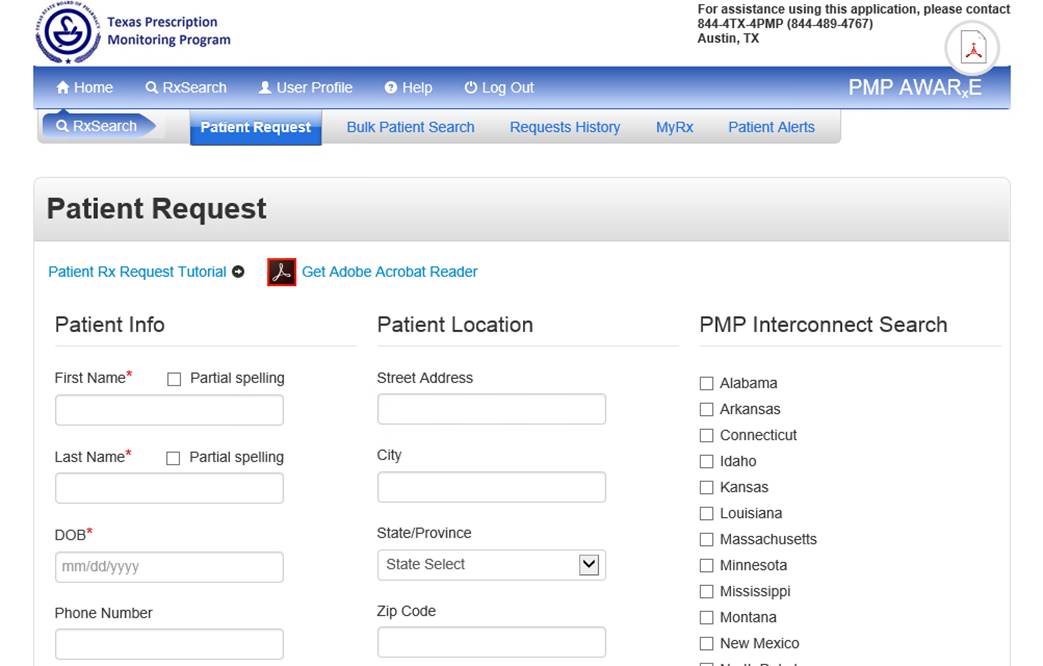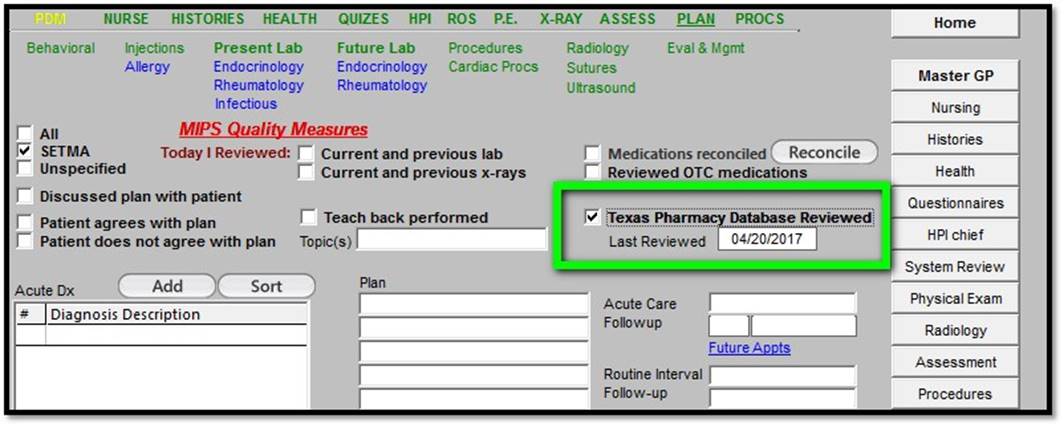|
The solution to the opioid epidemic, as far as it involves healthcare providers, in this series has addressed:
- Defining the problem
- Making certain that the person for whom the medication is prescribed is the one taking it
- Making it possible for the provider to audit their issuing of prescriptions for opioids and/or for controlled substances
- Improving medication records with accurate medication lists
- Completing routine, thorough and accurate medication reconciliation in the EMR
This bring us to the next step in this process which is the “surprise” to patients that in most states and certainly in Texas, it is possible for a provider to know how many opioid prescriptions a patient has received, is receiving and from how many providers those prescription were received.
The electronic prescribing of controlled substances increases the accuracy of medication lists because the medication is added to the electronic record by the act of prescribing. This eliminates a previous redundant step when the old triplicate prescription pad was used. The prescription was written and then that had to be recorded in the EMR. Now, the writing of the prescription and its documentation in the EMR are done simultaneously.
The abuse of opioids is significantly reduced by these steps but this step is critical. The ability, at the point and at the time of care, for the provider to be able to review a patient’s use of opioids is a great advance. The ability to confront a patient who is getting medications at multiple pharmacies and/or from multiple providers is outstanding.
Before opioids are renewed or initiated physicians should check the patient's controlled substance prescription history through the Texas Department of Public Safety's
(DPS') new secure online Prescription Access in Texas (PAT) database. The program – designed to reduce patients' prescription drug abuse – allows physicians and police to go online to see what controlled substances a patient has been prescribed in the past year and where the prescription was generated.
In an August 2, 2012 the Texas DPS announced its launching of an Online Version of Texas Prescription Drug Monitoring Program. The program was described as follows. “At the urging of the 82nd Texas Legislature, the Texas Department of Public Safety (DPS) has developed a secure online prescription monitoring program, called Prescription Access in Texas (PAT), which provides controlled substance prescription dispensing history to authorized health care and law enforcement professionals. DPS officially launched PAT in June 2012, at which time the database became available to a select group of practitioners, pharmacists and law enforcement professionals. This week, DPS has extended program access to additional physicians and law enforcement, mid-level practitioners, medical board and nursing board investigators.
The rationale given by the Texas DPS was that, “Prescription drug abuse is a serious problem, and the new online prescription drug monitoring program will help the state of Texas combat this issue,” said DPS Director Steven McCraw. “It is essential that doctors and pharmacists have quick access to the information they need to identify potential prescription drug abusers and traffickers before they fraudulently receive the drugs. Law enforcement access to this information is also crucial to investigating those individuals or organizations engaged in the trafficking of prescription drugs. This new tool will allow a proactive approach to prevention, assist with criminal investigations, provide historical reporting and identify trends.”
DPS launched a pilot version of the PAT in August 2011, which has since proven successful. Each registered user must provide licensing information to ensure data is released only to authorized users. As required by statute, the PAT database includes Schedule II – Schedule V drugs for the last 12 months only, and pharmacists must report prescription data within seven days of the prescription being filled.
"I have supported the enhancement of the prescription drug monitoring program, including legislation I passed that changed Texas law to significantly expand the types of prescription drugs being monitored by DPS today," said State Senator Tommy Williams. "I am proud Texas has brought this critical database online so our healthcare professionals and investigators can quickly and easily identify potential prescription drug abuse, patients who are doctor shopping, forging prescriptions and physicians who are illicitly prescribing drugs."
In 1982 the Texas Legislature created the original prescription drug monitoring program, which is now called the Texas Prescription Program, as an efficient, cost effective tool for investigating and preventing drug diversion. Since then authorized users have had to access this information through a manual paper process.
“PAT, the new online version of the database, represents a substantial upgrade by allowing instant, 24/7 access to authorize users. In addition to this week’s expansion of access to PAT, additional users will continue to be phased in over the next two months. Pharmacists and pharmacy board investigators are on track to acquire access to the system in mid-August, and podiatrists, dentists, veterinarians; board investigators for each of those three professions; and out-of-state practitioners are scheduled to obtain access near the end of August.
Texas law restricts access to prescription data to practitioners and pharmacists who are inquiring about their patients, and to various regulatory and law enforcement personnel conducting investigations. Practitioners include physicians, dentists, veterinarians, podiatrists, advanced practice nurses or physicians assistants.”
With the proper registration, including unique password protection, and State Medical License a provider and his/her delegate can access the information from this data base.

Once the patient’s identification is established, all prescriptions for opioids and controlled substances will be displayed.
Texas Prescription Monitoring Program (PMP Aware Texas) shows you the:
- patients name,
- any addresses that they may use,
- all prescriptions with
- filled date,
- written date,
- medication name
- dosage,
- quantity,
- day supply,
- how many refills
- the payment type (cash, insurance, etc.)
This will be displayed for the past year but you can make changes to the date frame that you would like to search certain dates, all prescribers and their addresses, pharmacy that meds have been filled.
What a surprise, this will be to anyone who is trying to abuse or game the system.
If a provider wants to it is possible to check and see any prescriptions that are being written under a provider’s DEA number.
SETMA will monitor the use of this tool at least once a year on each patient for whom a prescription is electronically prescribed for a controlled substance. The provider will denote in the green box below when the Texas Pharmacy Database was last reviewed. The standard is that it will be reviewed at least once a year on each patient receiving a controlled substance.

|